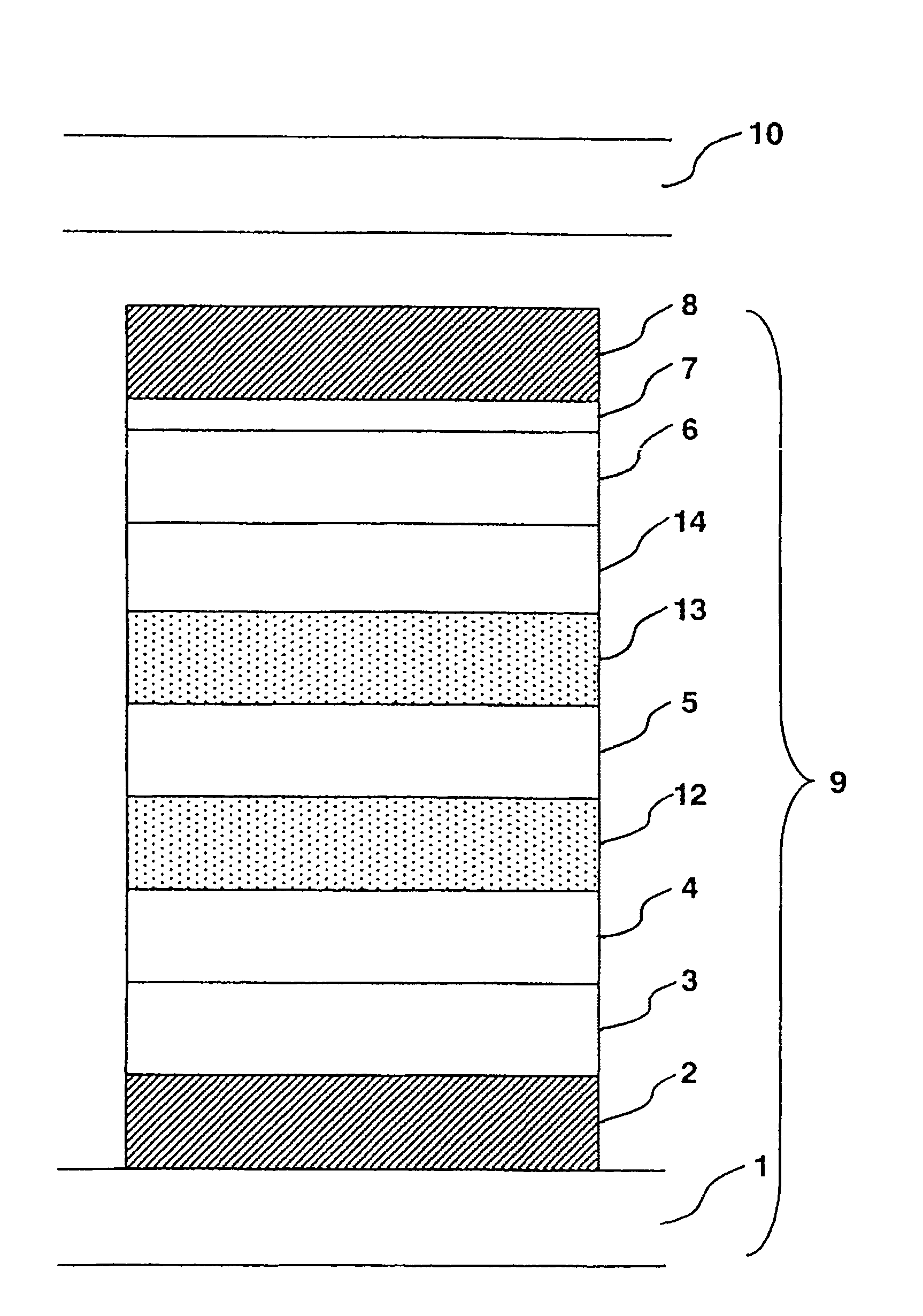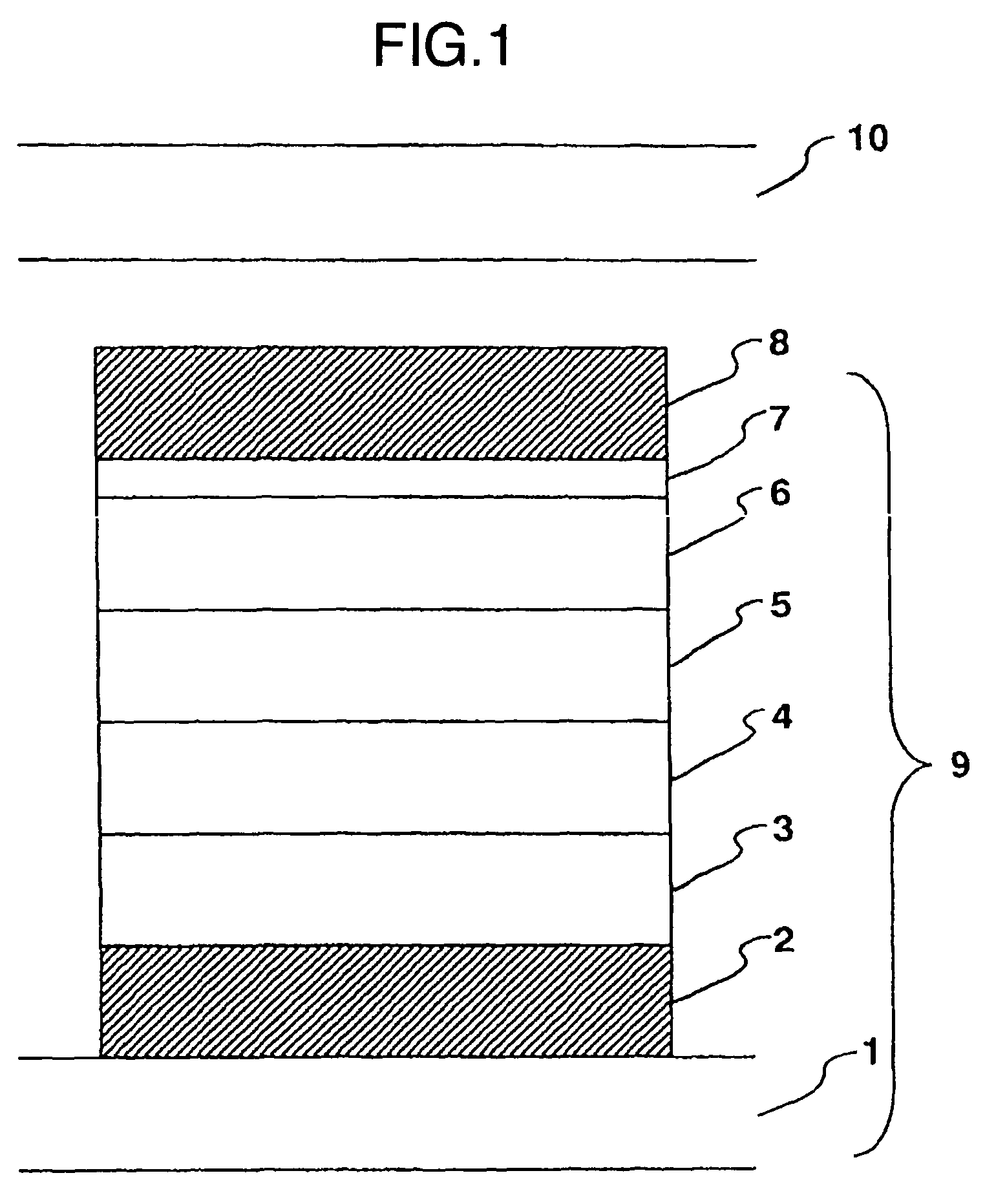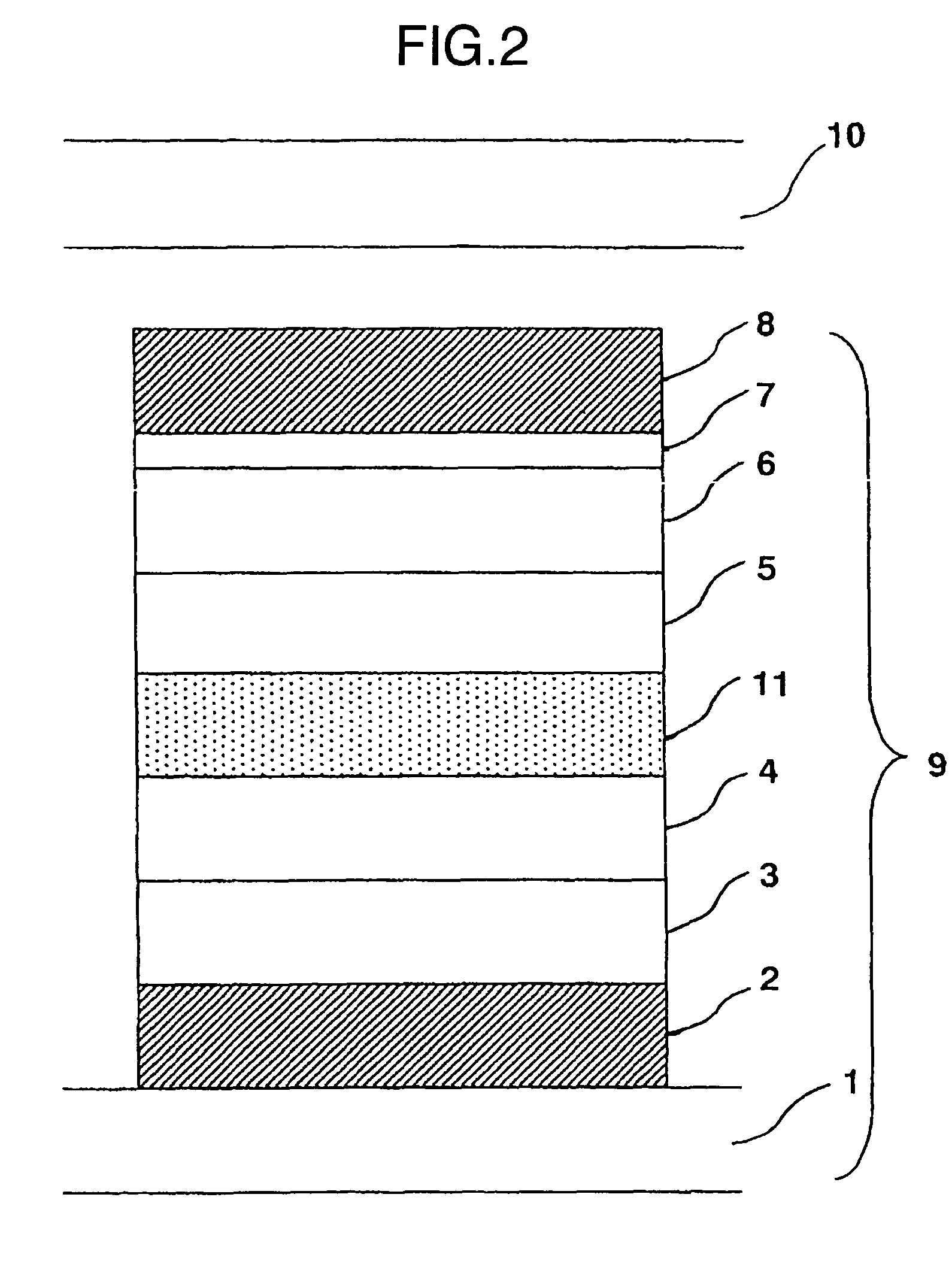Organic light-emitting element, image display device and production method thereof
a technology of light-emitting elements and image display devices, which is applied in the direction of discharge tube luminescnet screens, natural mineral layered products, transportation and packaging, etc., can solve the problems of element reliability, degradation of light-emitting layers, and element reliability
- Summary
- Abstract
- Description
- Claims
- Application Information
AI Technical Summary
Benefits of technology
Problems solved by technology
Method used
Image
Examples
example 1
[0204]First, one embodiment of the laminated layer comprising 2 mixed light-emitting layers is described by referring to FIG. 1, wherein 1: glass board, 2: lower electrode, 3: hole transport layer, 4: first mixed light-emitting layer, 5: second mixed light-emitting layer, 6: electron transport layer, 7: electron injection layer, 8: upper electrode, 9: organic EL board, and 10: sealing board.
[0205]A 150 nm thick ITO film was formed on the glass board 1 by sputtering, and was treated by photolithography to form the lower electrode 2.
[0206]Next, the lower electrode 2 was coated with a 50 nm thick film of 4,4-bis[N-(1-naphthyl)-N-phenylamino]biphenyl (hereinafter referred to as α-NPD) by vacuum deposition.
[0207]A starting material for α-NPD, put in a sublimation boat of molybdenum, was deposited on the lower electrode 2, where the deposition rate was controlled at 0.15±0.01 nm / second. The α-NPD film worked as the hole transport layer 3.
[0208]Next, the hole transport layer 3 was coated w...
example 2
[0229]Next, another embodiment of the laminated layer with a mixed transport layer placed between 2 mixed light-emitting layers is described by referring to FIG. 2, wherein 11: mixed transport layer.
[0230]A 150 nm thick Cr film was formed on the glass board 1 by sputtering, and was treated by photolithography to form the lower electrode 2.
[0231]The lower electrode 2 was coated with the hole transport layer 3 and first mixed light-emitting layer 4 in the same manner as in EXAMPLE 1.
[0232]Next, the first mixed light-emitting layer 4 was coated with a 15 nm thick codeposited film of HMTPD and BCP by vacuum deposition on. Starting materials for HMTPD and BCP, each put in a sublimation boat of molybdenum, were codeposited, where the deposition rate was controlled at 0.20±0.01 nm / second for these materials. The codeposited film worked as the mixed transport layer 11.
[0233]Next, the mixed transport layer 11 was coated with the second mixed light-emitting layer 5 in the same manner as in EX...
example 3
[0254]Next, still another embodiment of the laminated layer having 3 mixed light-emitting layers with 2 mixed transport layers each placed between the mixed light-emitting layers is described by referring to FIG. 3, wherein 12: first mixed transport layer, 13: second mixed light-emitting layer and 14: third mixed light-emitting layer.
[0255]The glass board 1 was coated with the lower electrode 2, hole transport layer 3 and the first mixed light-emitting layer 4 in the same manner as in EXAMPLE 1.
[0256]Next, the first mixed light-emitting layer 4 was coated with a 15 nm thick codeposited film of HMTPD and BCP by vacuum deposition. Starting materials for HMTPD and BCP, each put in a sublimation boat of molybdenum, were codeposited, where the deposition rate was controlled at 0.20±0.01 nm / second for these materials. The codeposited film worked as the first mixed transport layer 12.
[0257]Next, the first mixed transport layer 12 was coated with a 5 nm thick codeposited film of α-NPD, Alq3...
PUM
| Property | Measurement | Unit |
|---|---|---|
| thickness | aaaaa | aaaaa |
| thickness | aaaaa | aaaaa |
| work function | aaaaa | aaaaa |
Abstract
Description
Claims
Application Information
 Login to View More
Login to View More - R&D
- Intellectual Property
- Life Sciences
- Materials
- Tech Scout
- Unparalleled Data Quality
- Higher Quality Content
- 60% Fewer Hallucinations
Browse by: Latest US Patents, China's latest patents, Technical Efficacy Thesaurus, Application Domain, Technology Topic, Popular Technical Reports.
© 2025 PatSnap. All rights reserved.Legal|Privacy policy|Modern Slavery Act Transparency Statement|Sitemap|About US| Contact US: help@patsnap.com



